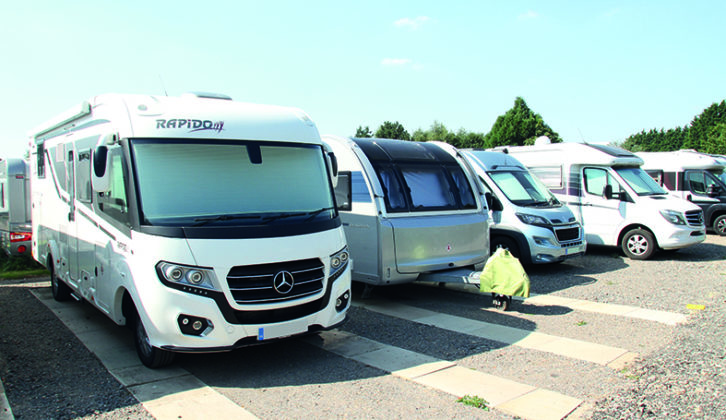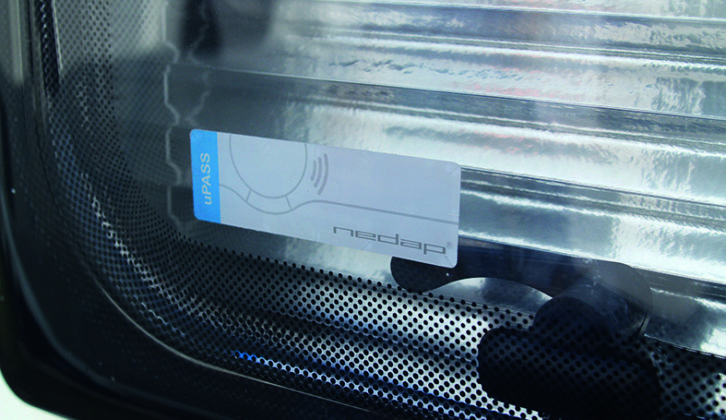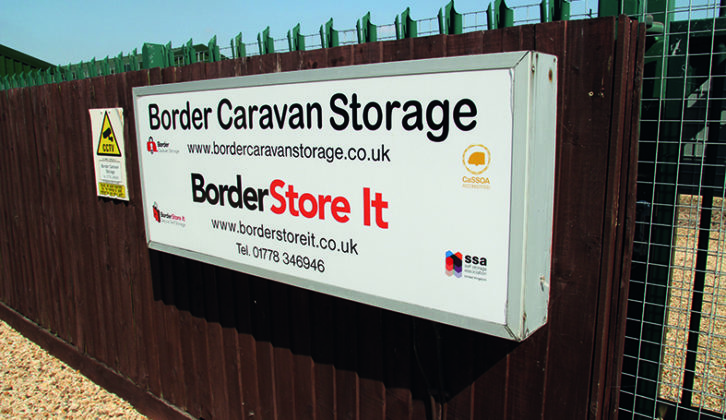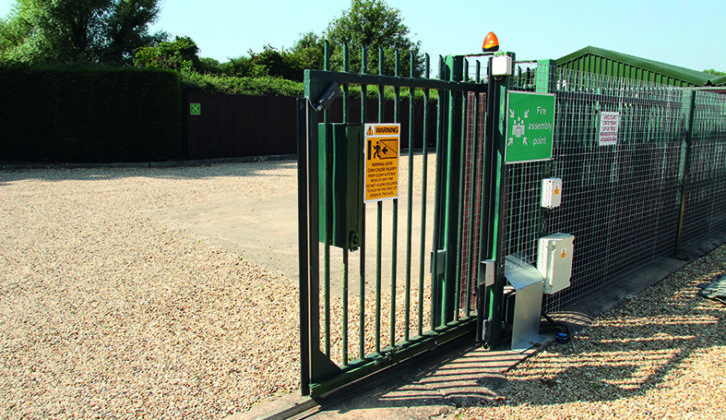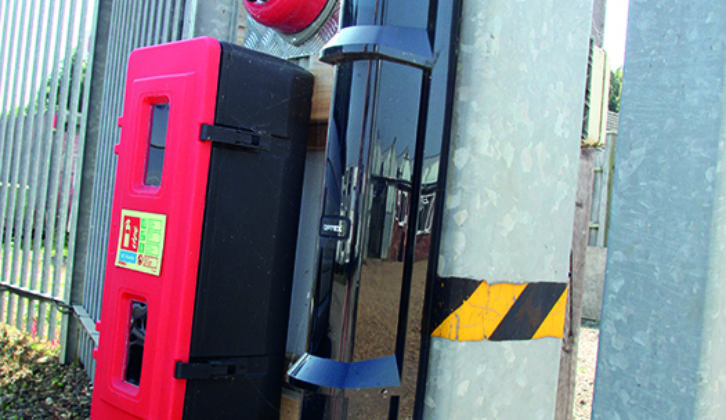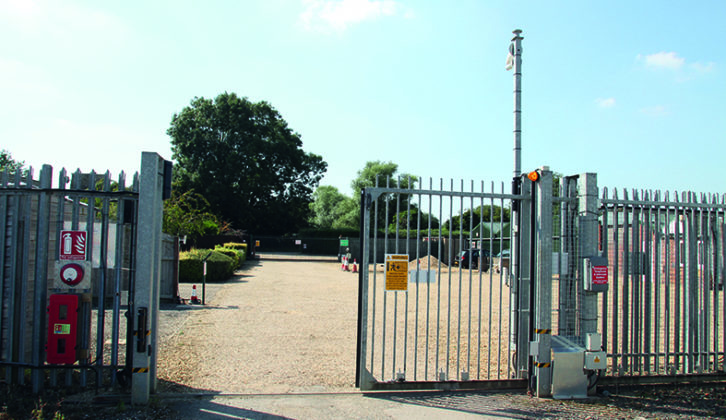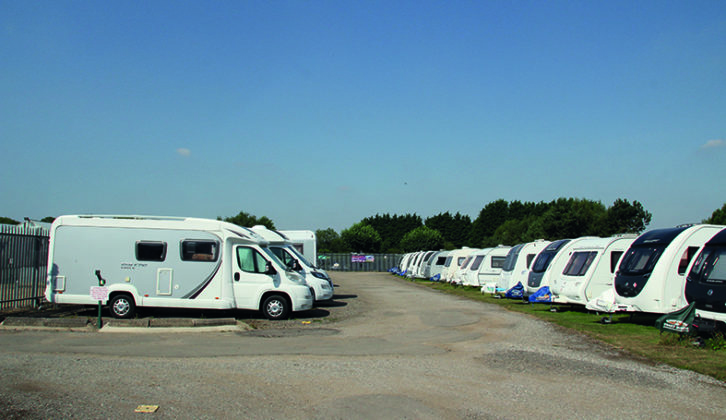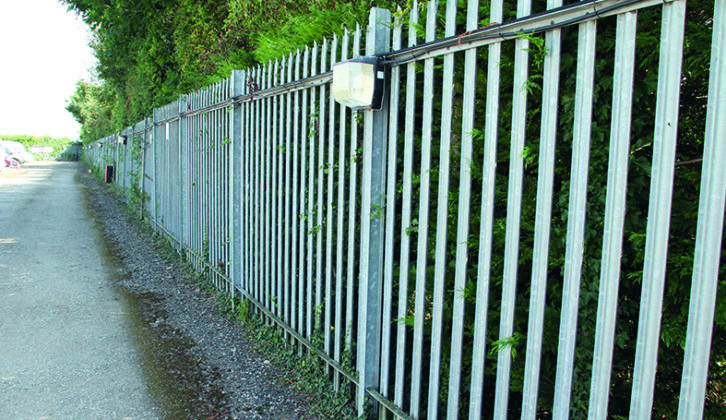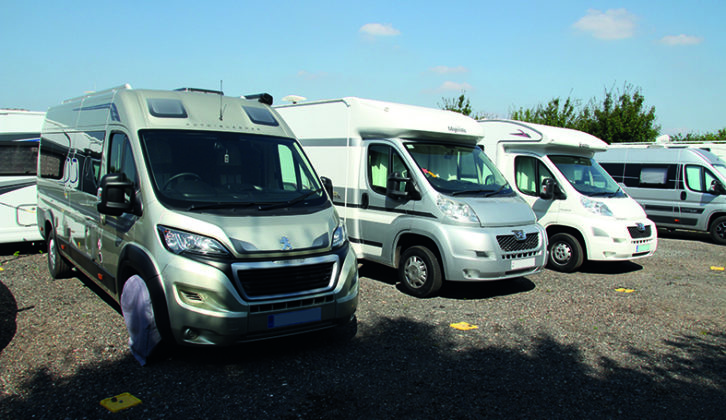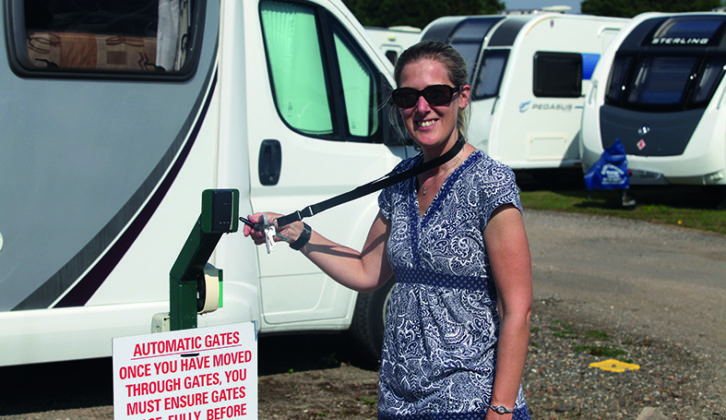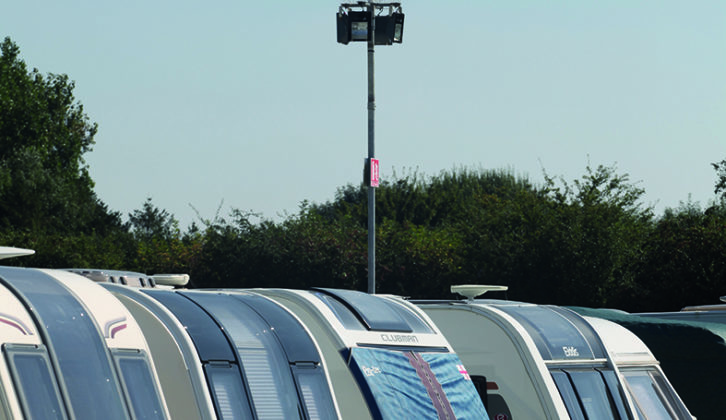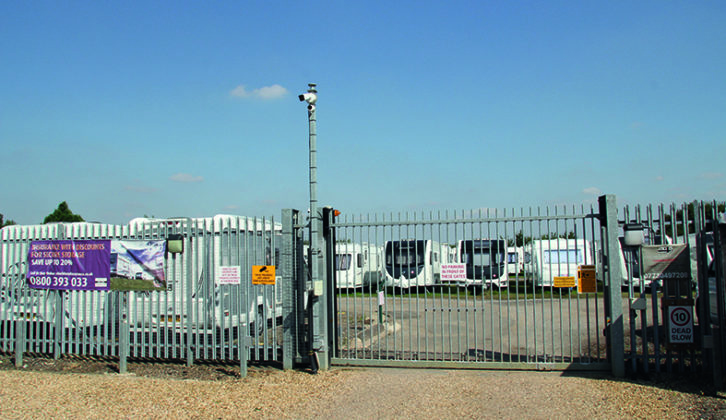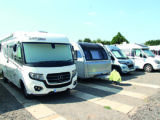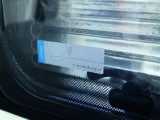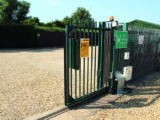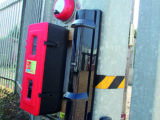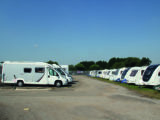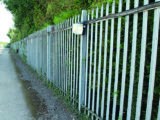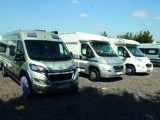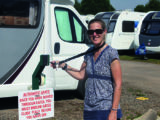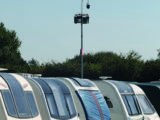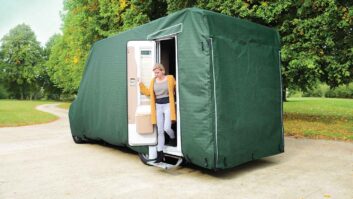Motorhomes are valuable. To you, that value lies in the freedom they prove and the memories they make. To a minority of others, it is measured in cash – whatever they can get for your ‘van once they’ve relieved you of it.
Following the lockdowns, motorhomes have never been in greater demand. Factory shutdowns mean new vehicles are in short supply, while a booming staycation culture (and the realisation that touring is a great life) has hugely increased the desire for used models. With the monetary value rocketing, so is the number of thefts, making motorhome security especially important.
As the average ‘van spends a fair bit of its life in storage, and just a few months each year on tour it’s important to choose your method of storage very carefully.
This guide explores the options open to you, and provides details on the things you should think about and look for when you’re choosing.
Storing at home
Many motorcaravanners will store their leisure vehicle at home, on the driveway or in spaces in the garden when they’re winterising a motorhome. The benefits of this are manifold: you save money, your ‘van is right there when you want to load it for a trip, or carry out maintenance and cleaning, and you can keep an eye on it.
Things such as battery maintenance are also much easier with your vehicle at home. You can keep your leisure battery topped up with a trickle charger, and this may well prolong its life.
However, there are some downsides to home storage. For starters, your ‘van is at far more risk when it is stored at home than it would be in formal secure storage. Each year, thousands of vehicles are stolen from the owner’s property, and just a handful from specialist facilities.
Storing at home is also likely to increase your insurance costs, and when you do go away, it’s very clear to thieves that you’re not at home.
A large motorhome takes up a lot of space, and many modern estates prohibit leisure vehicle storage at home. Check your property deeds to find out if you are covered by such a ban.
If you can store at home, and that is your preferred option, it’s advisable to use additional security measures to protect your ‘van.
Consider protecting your home storage space with a passive infrared (PIR) light, which triggers if anyone gets close to your motorhome.
Closed-circuit TV cameras (CCTV) can also be obtained relatively cheaply these days. These link into your home Wi-Fi, and the resulting images are sorted on a hard drive and/or in the cloud.
PIR lights and CCTV cameras should always be mounted high on a wall or post, well out of reach. Some PIR lights will also offer a warning-chime option inside your home.
If you do decide to store your motorhome at your property, it’s best to position it as far from the road as possible, perhaps blocking it in with a temporary fence panel or another vehicle.
As well as all of the essential security devices, including wheel locks and steering wheel locks, a security post adds an additional hassle factor for any would-be thief.
The most substantial ones are concreted into the ground and will require good DIY skills, or a builder to be engaged. A quicker option is a bolt-down post, which secures to your driveway with four long-steel bolts.
These posts should be sited behind or in front of the ‘van, and are then folded down to allow the vehicle to be removed. Although they are worthwhile, only the most heavy-duty version is likely to hinder a professional thief.
Again, for longer-term storage, consider emptying your ‘van of any valuables, including upholstery and seat cushions. Thieves are generally less likely to steal a motorhome that requires hundreds to be spent on new upholstery. Store these items somewhere warm and dry, and leave a blind opes so thieves can see they’ve gone.
Remote storage
Cheap motorhome storage is often available on farms and small holdings as property owners seek to diversify. These locations might not have formal security systems, and their remoteness is both a pro and a con.
While such places can be safe, especially on busy farms that are always occupied, if the farm is ever empty, your vehicle is at higher risk. There are several shocking videos on YouTube, where gangs of thieves arrive at a remote farm location and calmly remove the security devices using oxyacetylene cutters and angle grinders at their leisure, without fear of being disturbed.
Thieves can use easily accessed online satellite imaging to scan locations for potential ‘prey’ parked on drives or in remote locations, so ‘out of sight’ isn’t always ‘out of mind’.
If you do store your vehicle remotely, aim to take all of the same precautions that you would employ if you were keeping it at home, and bear in mind that, as your ‘van is unlikely to be easily accessible on a regular basis, you’ll need to keep an eye on things such as battery charging and general maintenance.
Secure storage
The safest place to lay up your motorhome is in a dedicated storage facility. The very best of these come with a whole suite of security measures to deter thieves and keep stored vehicles safe.
I visited Border Caravan Storage, in South Lincolnshire, one of the UK’s top leisure vehicle storage facilities and the first to gain Platinum rating from the Caravan Storage Site Owners’ Association (CaSSOA).
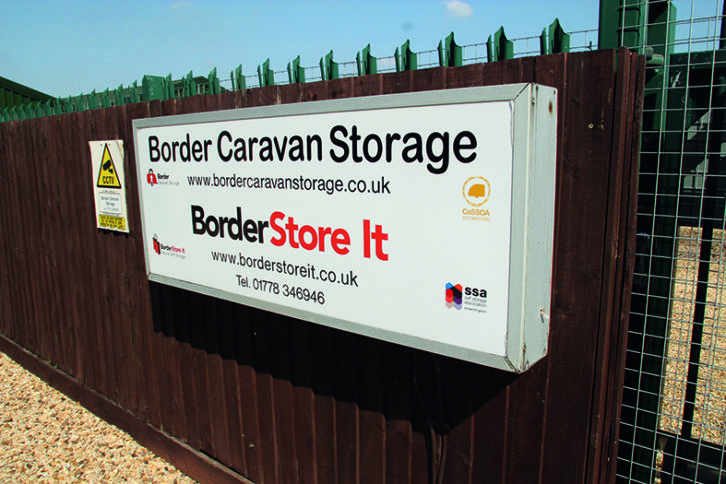
CaSSOA has some 500 members at independent locations across the UK, which are graded Bronze, Silver, Gold and now Platinum, depending on the level of security they offer.
Expanding the ratings has been necessary as new and innovative security systems become available, and top storage sites embrace them.
Border Caravan Storage is run by Keith and Alison Rogers, and their daughter Helen. Helen showed me around the site and explained the wide array of security measures in place.
If you are planning to use a secure storage facility for your motorhome, look for one that offers as many of the following important security features as possible. When you visit the premises, ask the owner to show you them.
Location
Where is the storage facility located? If hundreds of valuable leisure vehicles are clearly visible to passing motorists from the road, it is bound to attract more attention than one which is less obviously situated.
Flooding is another potential problem, so be sure to choose a facility that’s not on a floodplain or near a river that’s likely to flood.
Staffing
Is the site permanently staffed? Are the staff the owners/operators (who have vested interest in the long-term security of the site) or, possibly, minimum wage/agency security staff (who may not)?
As an example, Border Caravan Storage has permanent personnel (family and trusted staff) on site at all times, with the owners living next door to the facility.
Inside or outdoors
Good-quality indoor storage is the ultimate option (for both security and maintaining your vehicle’s condition), but could well be expensive and will very likely be in high demand.
At a working farm or warehouse, ensure that your ‘van is safely away from moving vehicles such as forklifts and tractors, and give some careful thought to fire safety.
Fencing
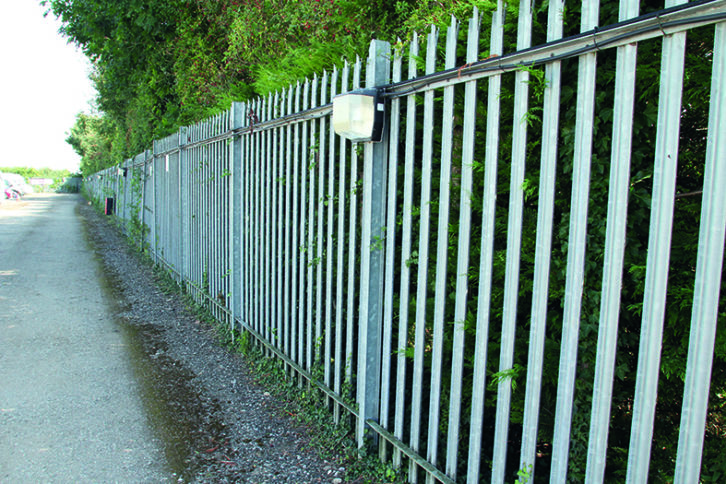
Anti-climb, 2.4m-high palisade steel fencing is considered one of the best options for securing a facility. It is strong and resistance to being rammed or ripped out. Ideally, climbable trees should not overhang the fencing or the site.
Gates
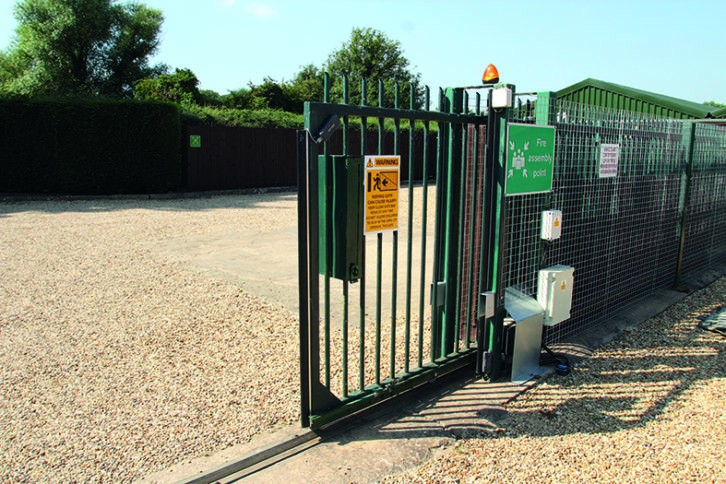
Any storage facility should have strong and secure gates, and preferably, one entry and exit point. The best, like Border, operate an airlock system, where each gate will only open when the other is closed. You pull past the first open gate, which then closes behind you, before the gate in front opens. This is a major deterrent to thieves, because they are very vulnerable when ‘locked in’ between the two gates.
Helen explained that Border Storage employs this system, although customers can access their motorhome at any time throughout the day, using a secure key fob mechanism.
Key fob/access cards
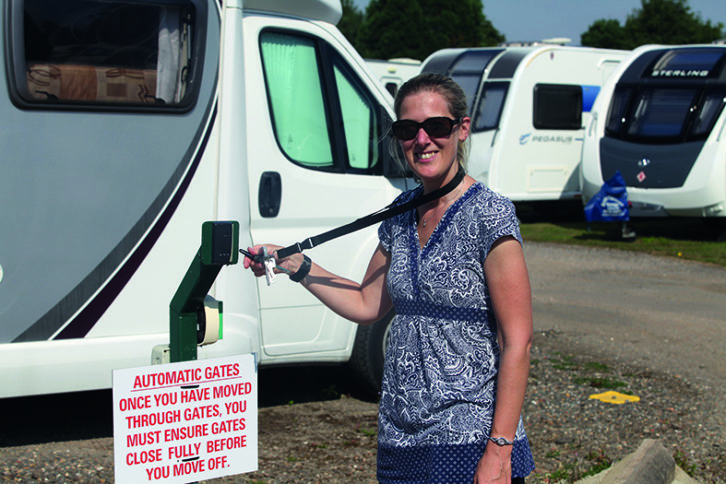
At the best sites, owners can automatically gain access to their vehicle at any time the site is open (and outside these hours by agreement).
They are furnished with a key fob, which is swiped across a sensor to operate high-security gates. Every entry and exit is logged, as are the vehicle’s movements, using smart-tagging.
Smart/data tags
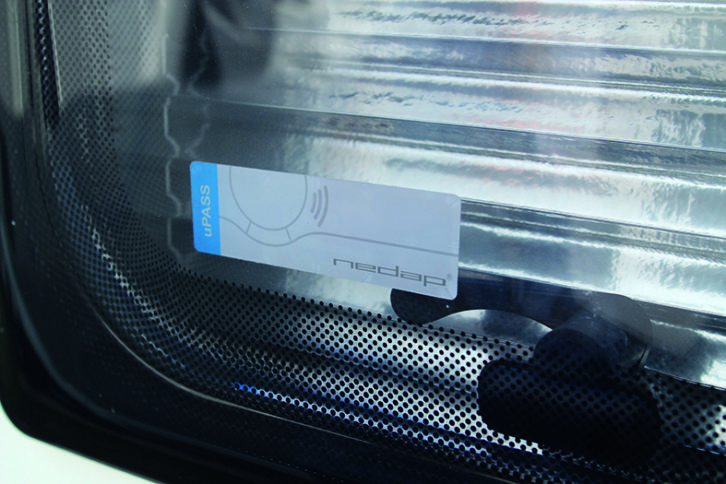
The latest tracking technology is used at CaSSOA Platinum-rated sites. A discreet electronic tag is affixed to the ‘van, and this is scanned by sensors whenever it is moved on and off the site. Staff will be alerted to any suspicious activity, and damaged tags (removal invalidates them) also trigger the system, securing the gates.
By integrating these systems, Keith, Alison and Helen always know which vehicles they have on site at any time, and only you can move your ‘van. With lesser (or no) systems, vehicles might be missing for weeks before the owner finds out.
Lights
Lighting at the storage location is another important feature; PIR-activated lights are better than permanent floodlights, because they will alert staff to intrusions when they come on, and can give thieves an unwelcome surprise when they are suddenly illuminated.
These lights should be positioned very carefully around the storage area to offer full coverage, and are best mounted high up on security posts, often with CCTV cameras next to them.
CCTV cameras
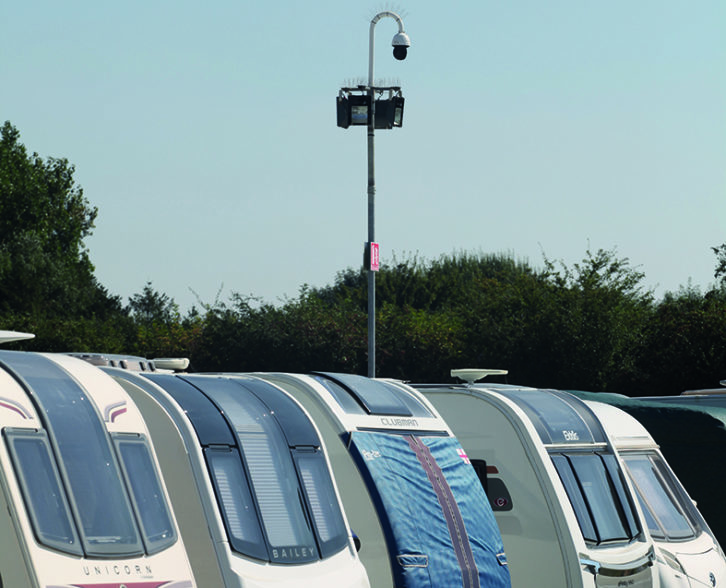
The perimeter and inner area of the storage site should have CCTV coverage. The latest cameras have night-vision capability and high-resolution imagery, which can, for example, capture facial details or vehicle numberplates.
Alarms and monitoring
The top storage sites have monitored alarm systems, to alert staff and the police if anything untoward is happening.
Spacing
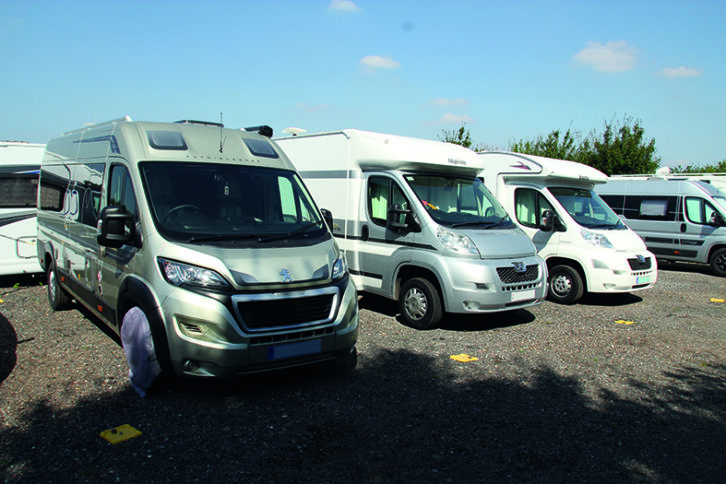
Motorhomes in storage should be spaced a good distance apart, not only to make parking or retrieving them less tricky, but also in case of fire.
Access
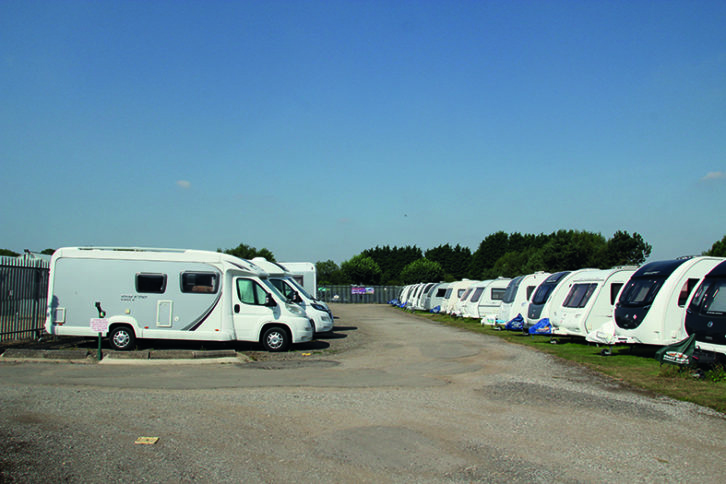
At what times of day can you access your vehicle, if, say you need an early start to catch the ferry? The better sites will offer excellent flexibility, even if it is by prior arrangement.
In addition, does the facility have wide roads to make entry and exit easier and safer? At Border Caravan Storage, the access roads are 6m wide.
Clean and tidy
It might not be the first thing that springs to mind, but this is actually really important. Is the site you’re looking at clean and tidy? If it isn’t, this might reflect the way in which it is run overall. Attention to detail in all aspects of leisure vehicle storage is an essential element of Platinum CaSSOA membership.
Vermin can cause thousands of pounds of damage to a stored motorhome in a short time. Clean, tidy sites are less likely to be home to rats and mice than messy ones.
Surfaces
What kind of surface will your vehicle be stored on? Is it in a grassy field or on an area of hardstanding? Will you be able to retrieve your ‘van easily following heavy rain, and so on?
Other services
Does the facility that you’re considering provide any additional services, such as cleaning and servicing? The best, like Border Storage, have special arrangements with trusted, AWS-approved mobile technicians, who can visit the premises to service your vehicle.
They can also arrange for replacement tyres to be fitted and for repairs to minor body damage, dings and scuffs to be carried out.
Likewise, many storage sites offer a cleaning service, and some also stock gas bottles, so you should never be caught short.
Together, these additional services help to ensure maximum security and convenience.
The cost
The price of good secure storage is very dependent on where you are in the country, your vehicle and the level of security on offer at the facility. Generally speaking, you can expect to pay anything from £200 to £700 a year in the north, and £350 to £1000 in the south-east.
Store and site
As an alternative, many campsites have diversified into vehicle storage as an extra revenue stream. If you love returning to the same site on a regular basis, this is a great option.
Summary
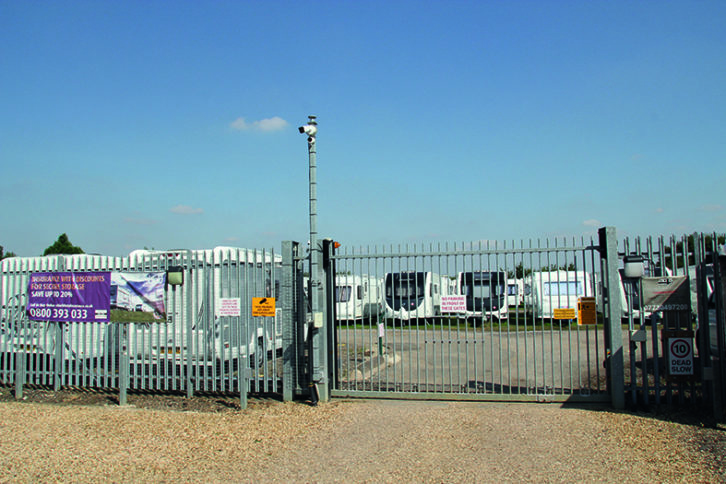
Anyone who’s ever had a motorhome stolen, damaged or burgled knows what a huge hassle it can be sorting everything out afterwards.
I know one couple with a much-loved older ‘van, who had all of the sofa bases and backs stolen while it was in remote storage. These proved a huge problem to replace, and they lost an entire season of touring while it was sorted out. People with this kind of experience recognise the value of top-quality secure storage.
Budget may be the deciding factor in how and where you store your vehicle, but there’s no doubt, well-run, bespoke secure storage facilities are the safest option (by a mile).
If that’s not viable, however, follow our advice on making your motorhome as secure as possible in other locations. Either way, the extra efforts you make will pay dividends when it comes to retrieving it for your next adventures. You” just never know!
If you liked this… READ THESE:
The best motorhome sites in the UK 2022
If you’ve enjoyed reading this article, why not get the latest news, reviews and features delivered direct to your door or inbox every month. Take advantage of our brilliant Practical Motorhome magazine SUBSCRIBERS’ OFFER and SIGN UP TO OUR NEWSLETTER for regular weekly updates on all things motorhome related.
Each year, thousands of vehicles are stolen from the owner's property, and just a handful from specialist facilities
